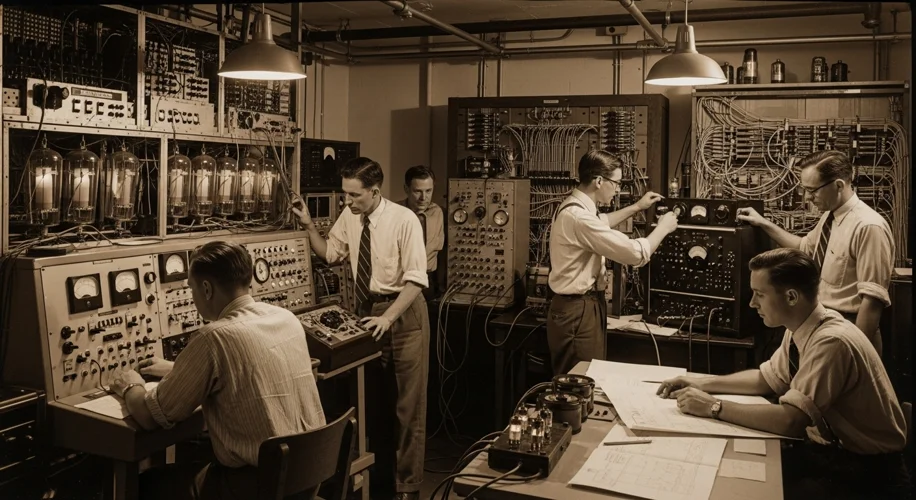As an archivist, I’ve spent countless hours sifting through dusty documents, often feeling like I’m stepping back in time. Today, I want to take you on a journey through a particularly fascinating period: the very beginnings of electronic computing. It’s a story of ingenious minds and remarkable leaps in technology.
Long before the sleek devices we carry today, the concept of automated calculation existed. Early mechanical calculators, like those developed by Charles Babbage in the 19th century with his Analytical Engine, laid conceptual groundwork. Though Babbage’s machines were never fully realized in his lifetime, his designs were incredibly forward-thinking, incorporating ideas like memory and conditional branching – fundamental elements of modern computers.
The real transformation, however, began with the advent of electronics. The transition from purely mechanical or electromechanical devices to electronic ones was a monumental shift. We’re talking about moving from gears and levers to something far more agile: the vacuum tube.
One of the earliest electronic computing devices was the Atanasoff-Berry Computer (ABC), developed by John Atanasoff and Clifford Berry at Iowa State College in the late 1930s and early 1940s. While not programmable in the modern sense, the ABC was designed specifically to solve systems of linear equations and was the first to use vacuum tubes for digital computation, binary arithmetic, and regenerative memory. It was a specialized machine, but its innovations were significant.
Then came the titans of the World War II era. The Colossus computers, developed in Britain by Tommy Flowers and others, were crucial for breaking German codes. They were large, complex machines using thousands of vacuum tubes, and their existence was a closely guarded secret for decades. In the United States, the ENIAC (Electronic Numerical Integrator and Computer) was completed in 1945. Often cited as the first general-purpose electronic digital computer, ENIAC was a behemoth, filling a large room and consuming immense amounts of power. Its programming involved physically rewiring the machine, a far cry from the software we use today.
These early electronic computers, despite their limitations and colossal size, demonstrated the immense potential of electronic calculation. They were instrumental in scientific research, military operations, and the initial steps towards automation.
However, vacuum tubes were prone to failure and generated a lot of heat. The next great leap came with the invention of the transistor in 1947 at Bell Labs. Transistors were smaller, more reliable, and consumed less power than vacuum tubes. This breakthrough paved the way for the second generation of computers, which were significantly smaller, faster, and more efficient. This miniaturization and increased reliability marked a crucial turning point, making computers more accessible and ushering in the era of computing we recognize today.
Looking back through the archives, it’s truly awe-inspiring to see the ingenuity of those early engineers and scientists. They were working with limited tools and understanding, yet they laid the very foundations for the digital world we inhabit. The evolution from mechanical gears to the first electronic brains and then to the compact powerhouses of today is a testament to human curiosity and innovation.

